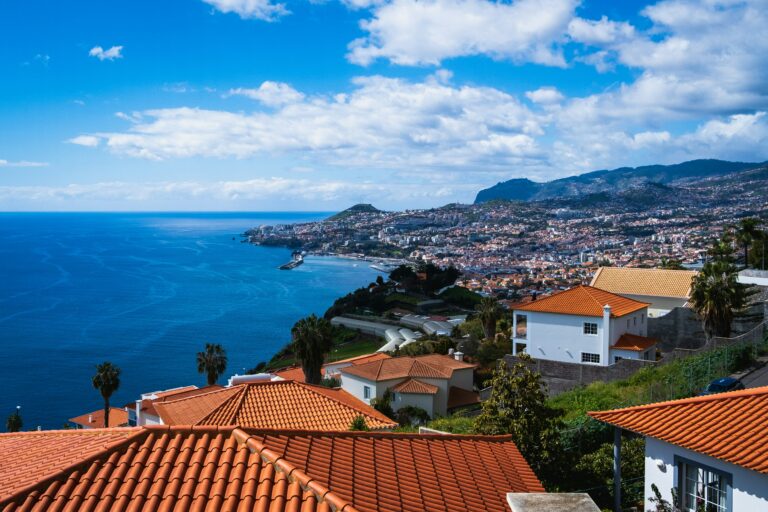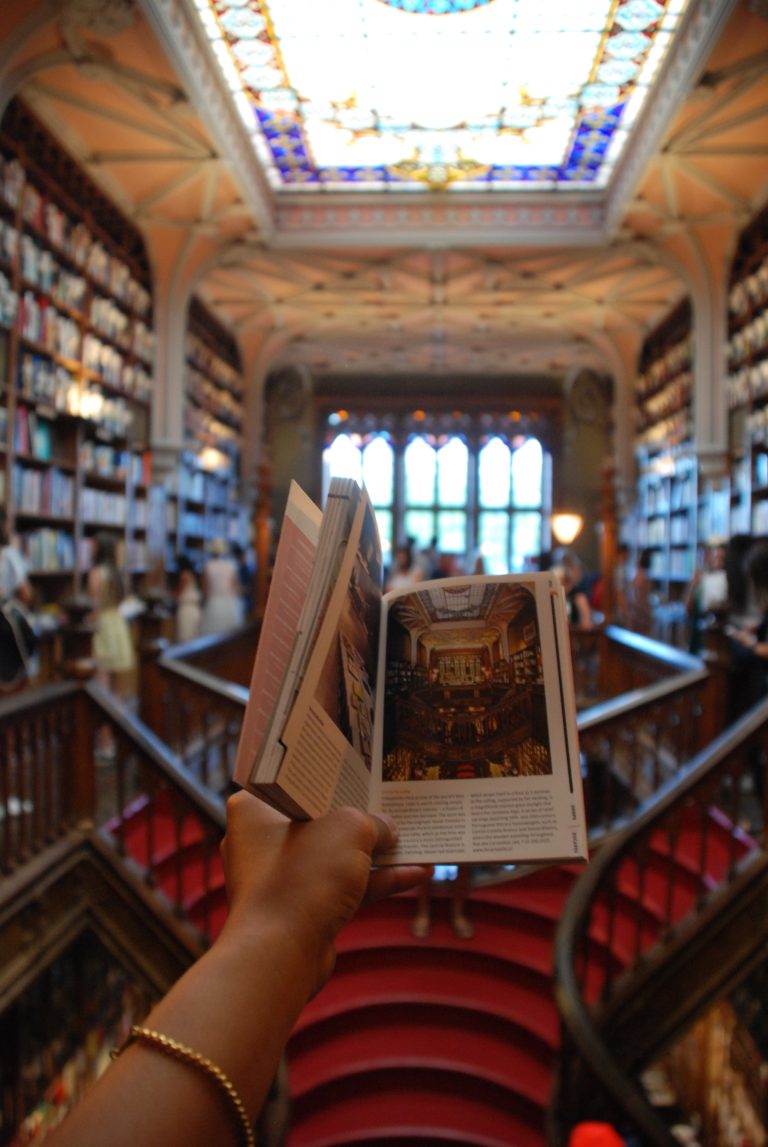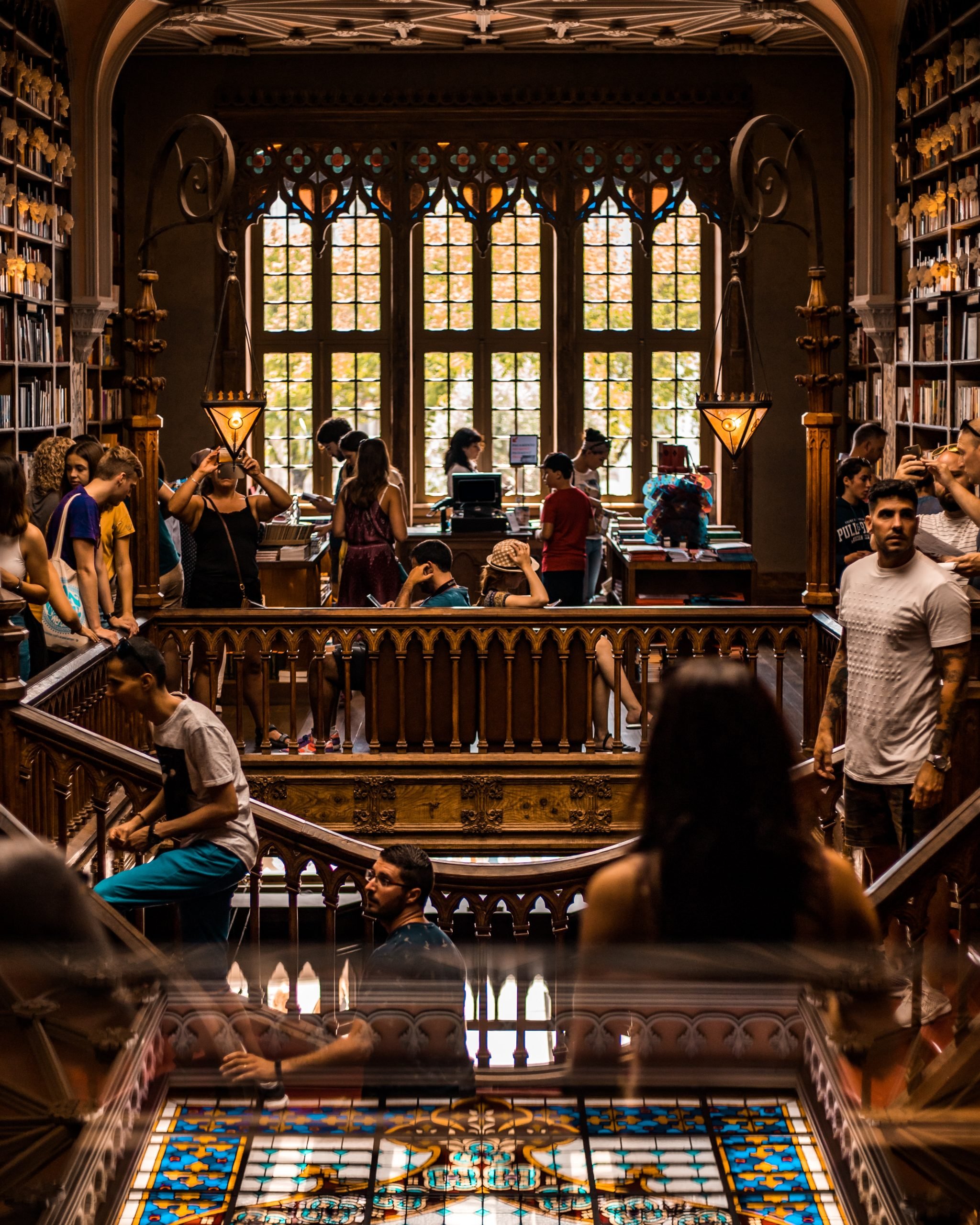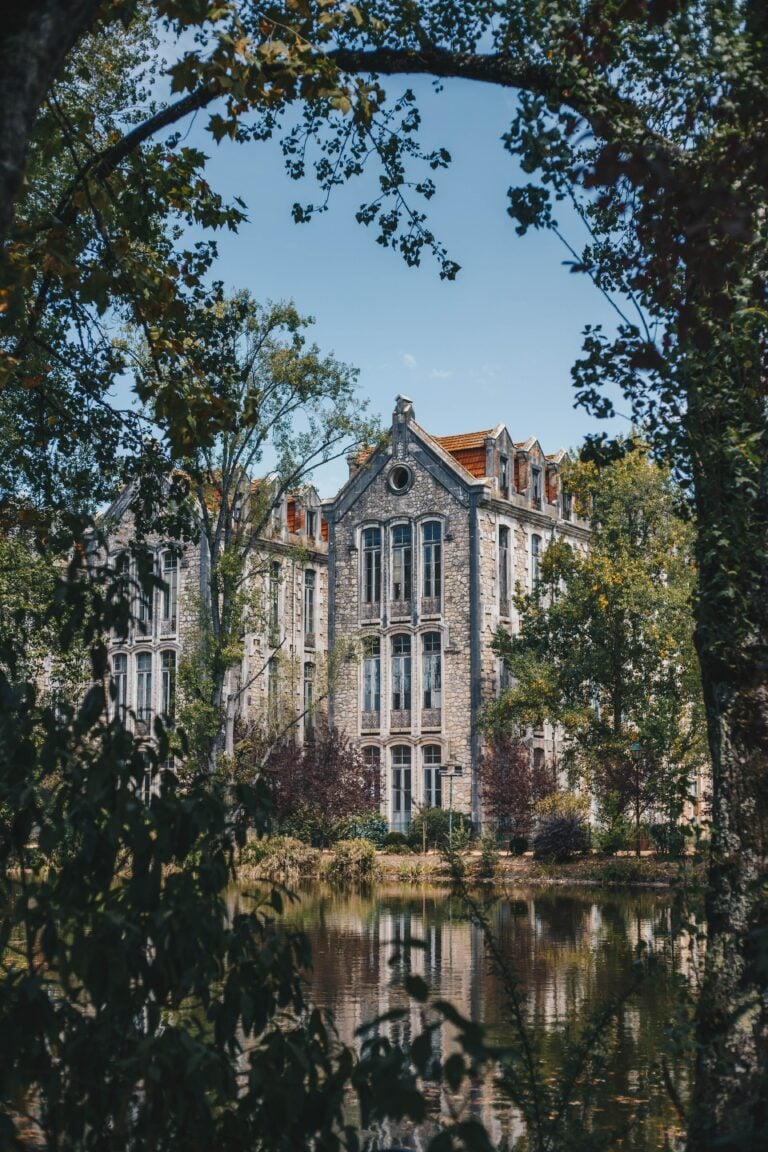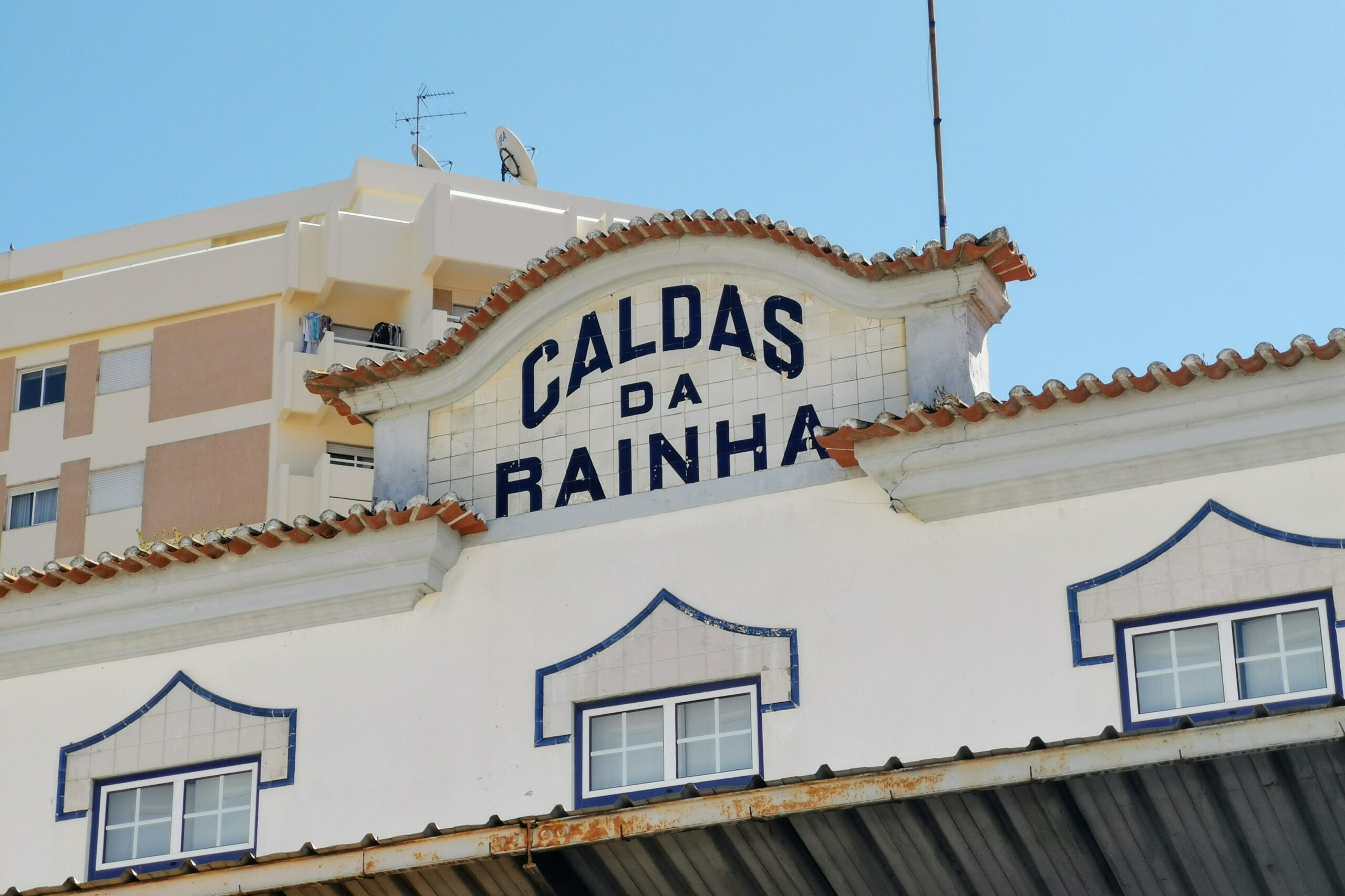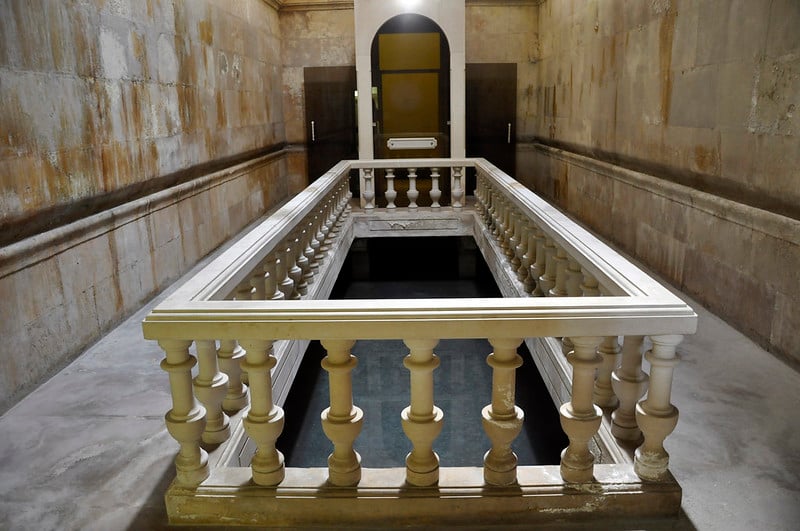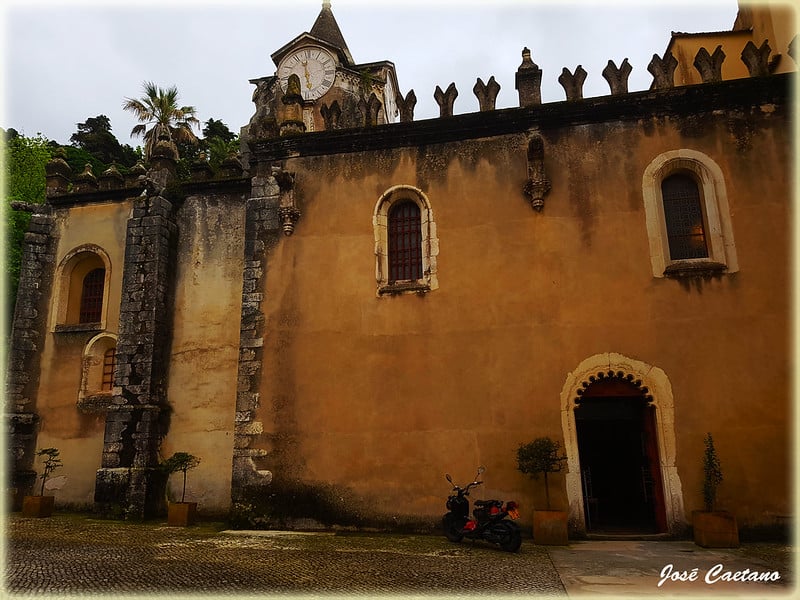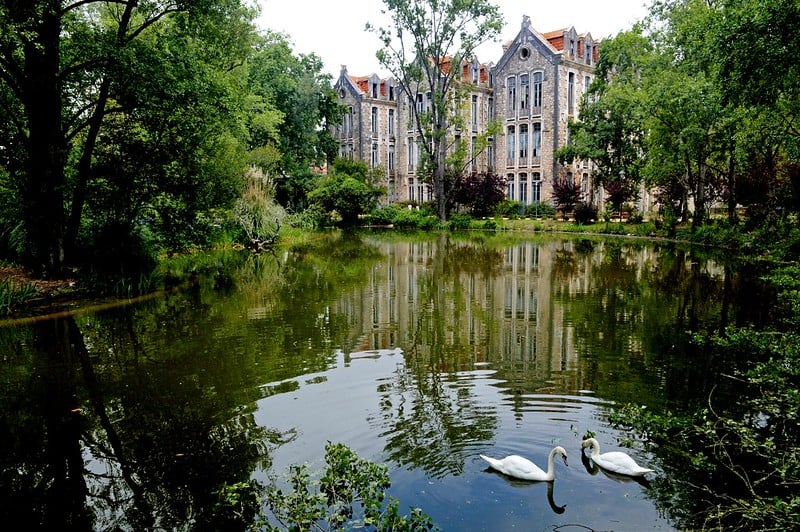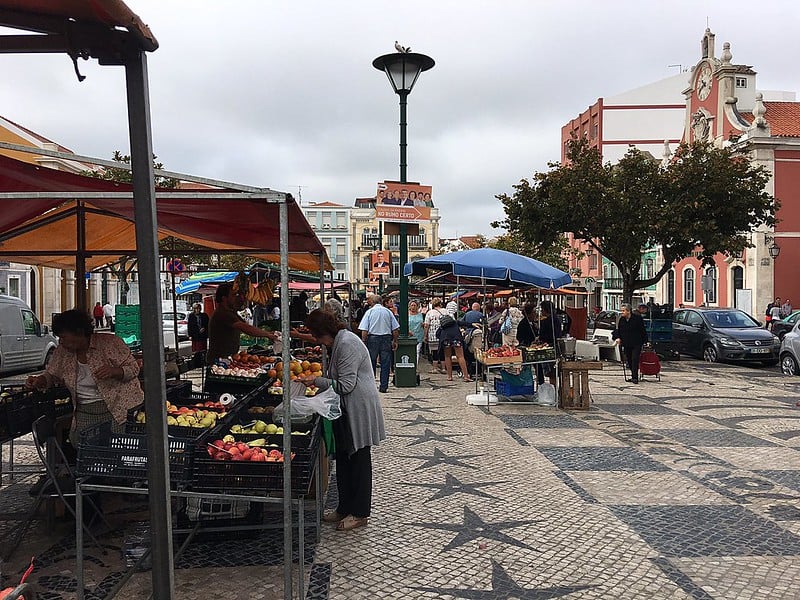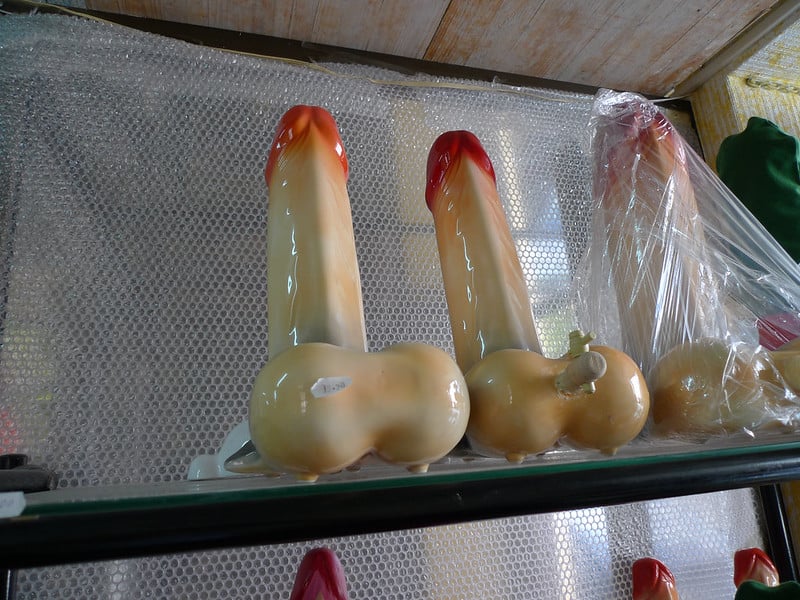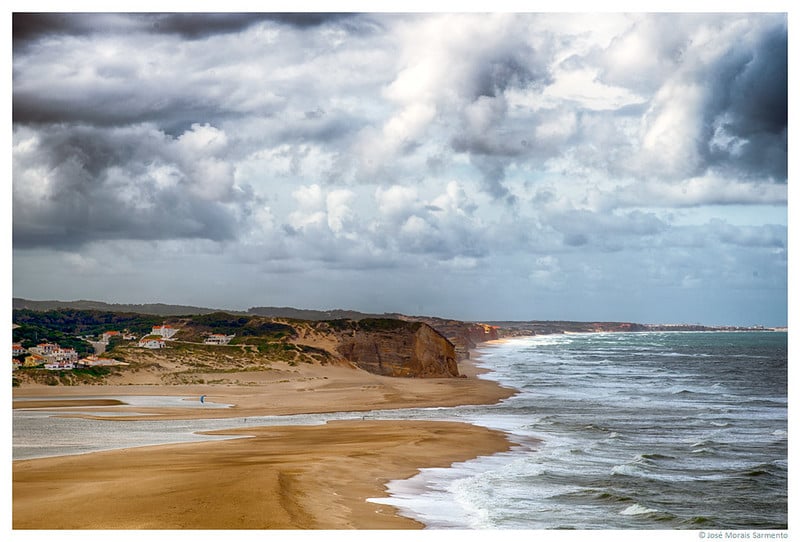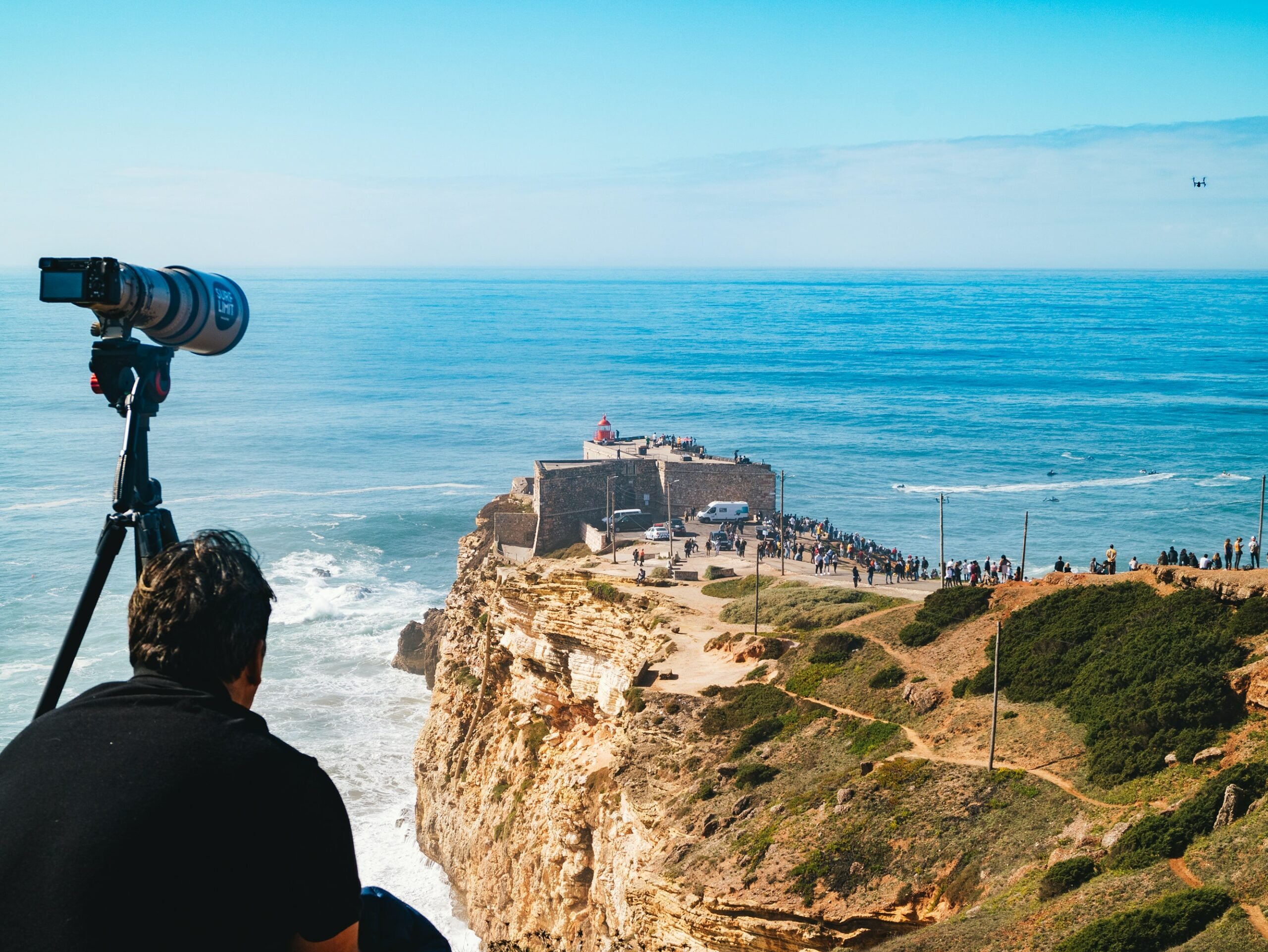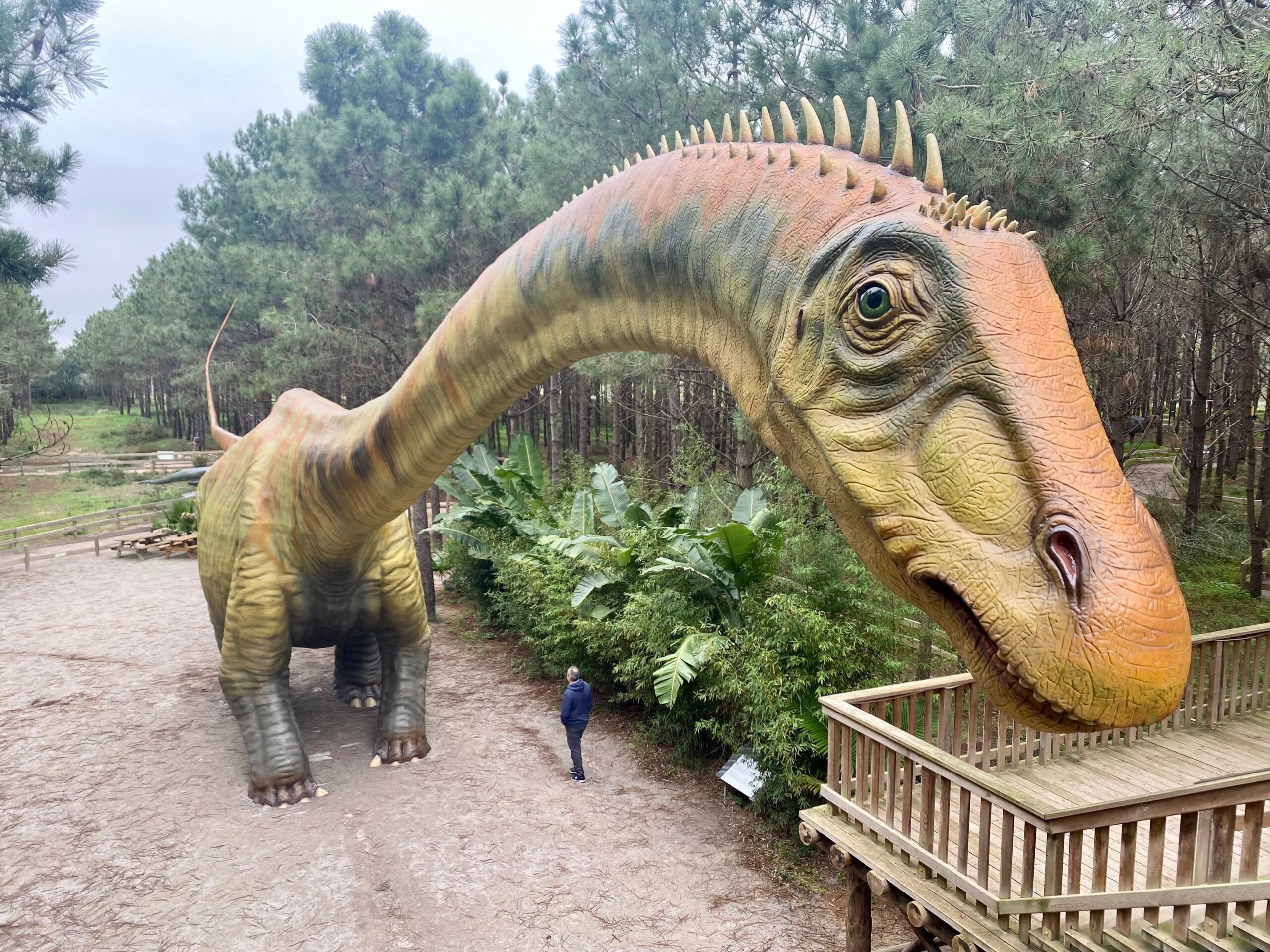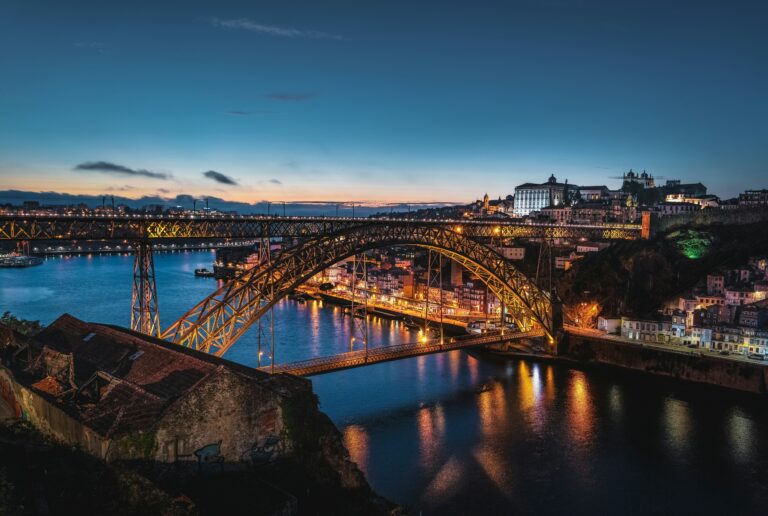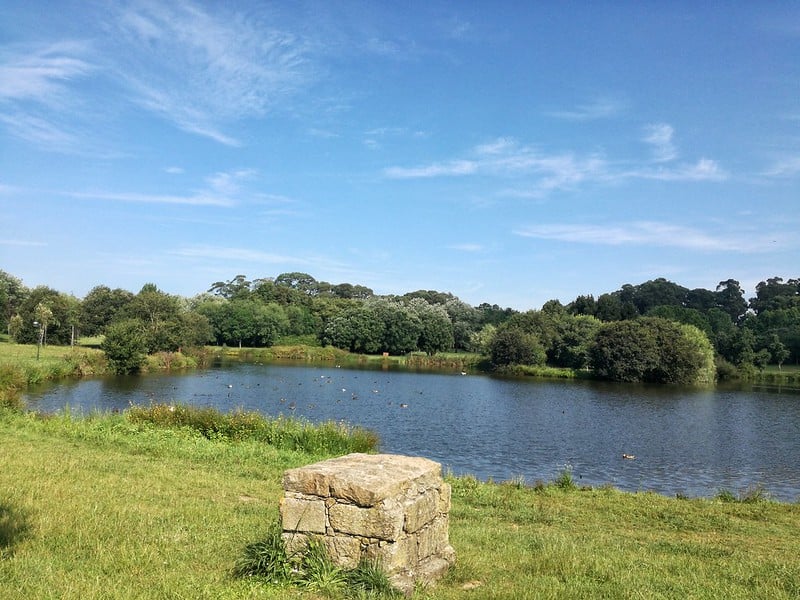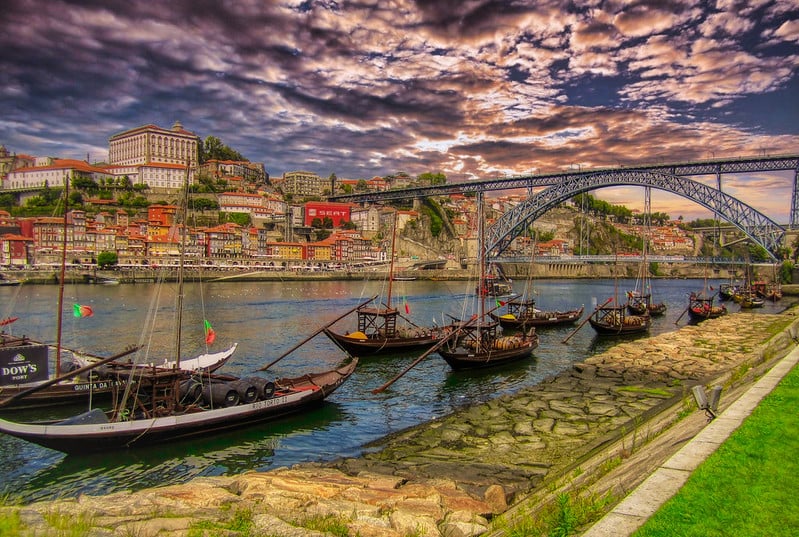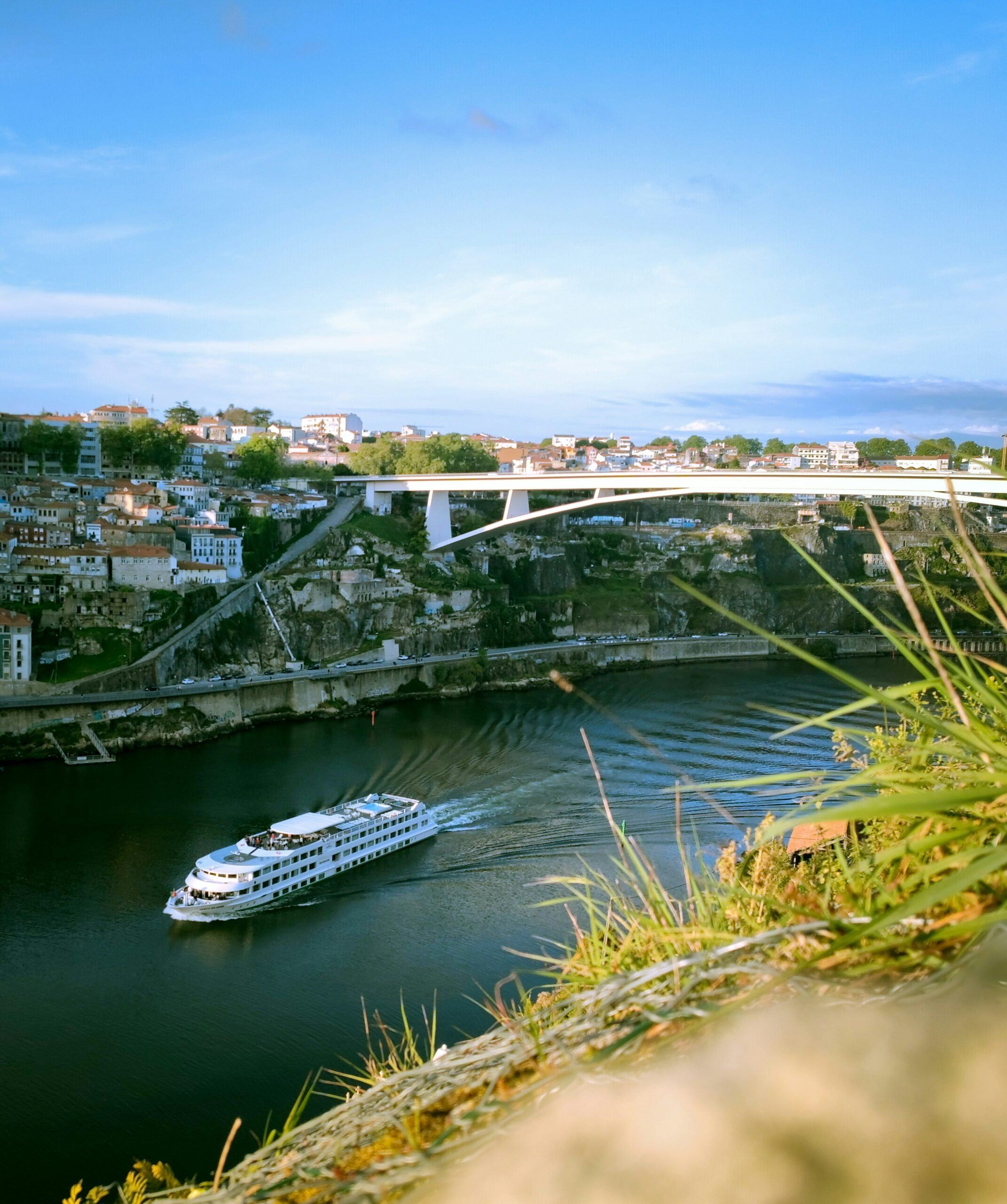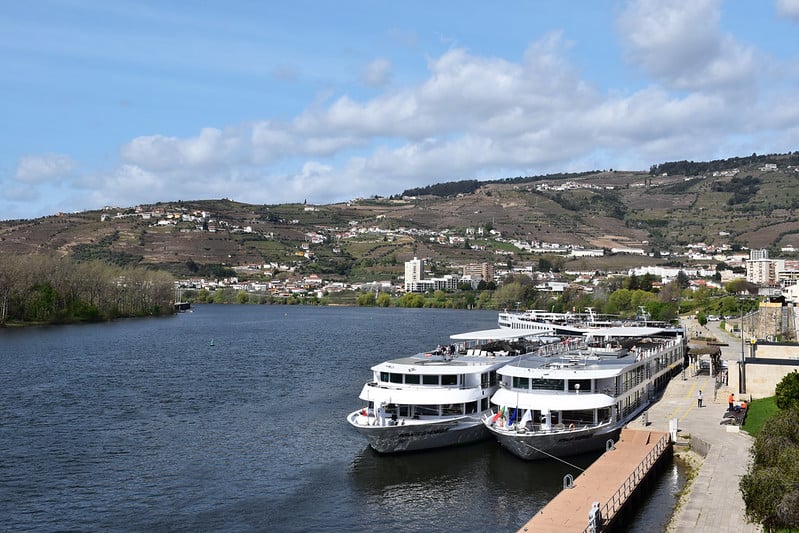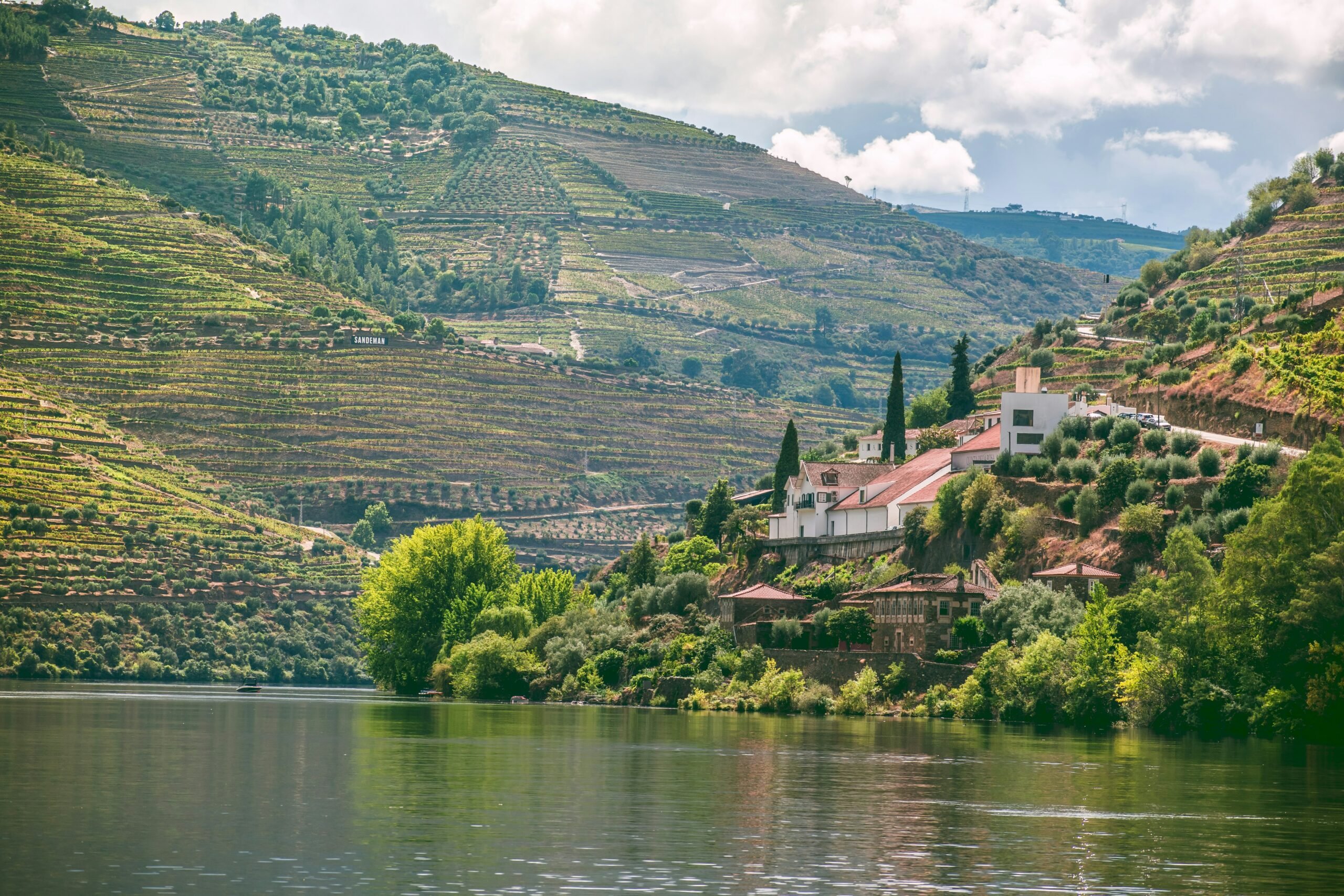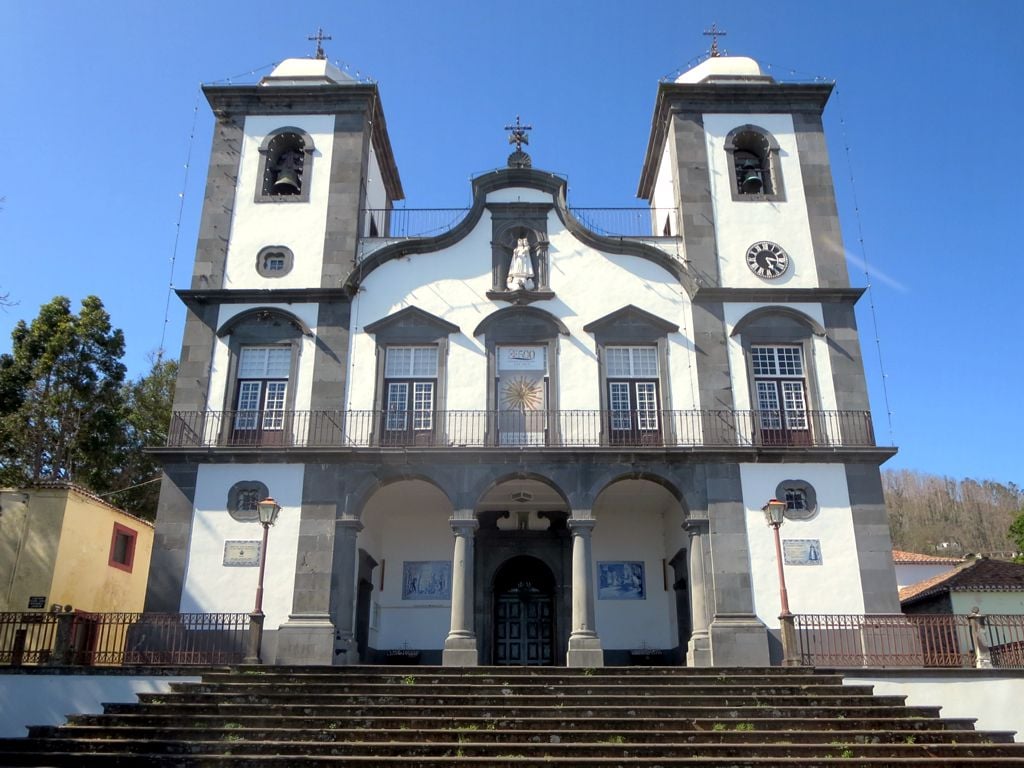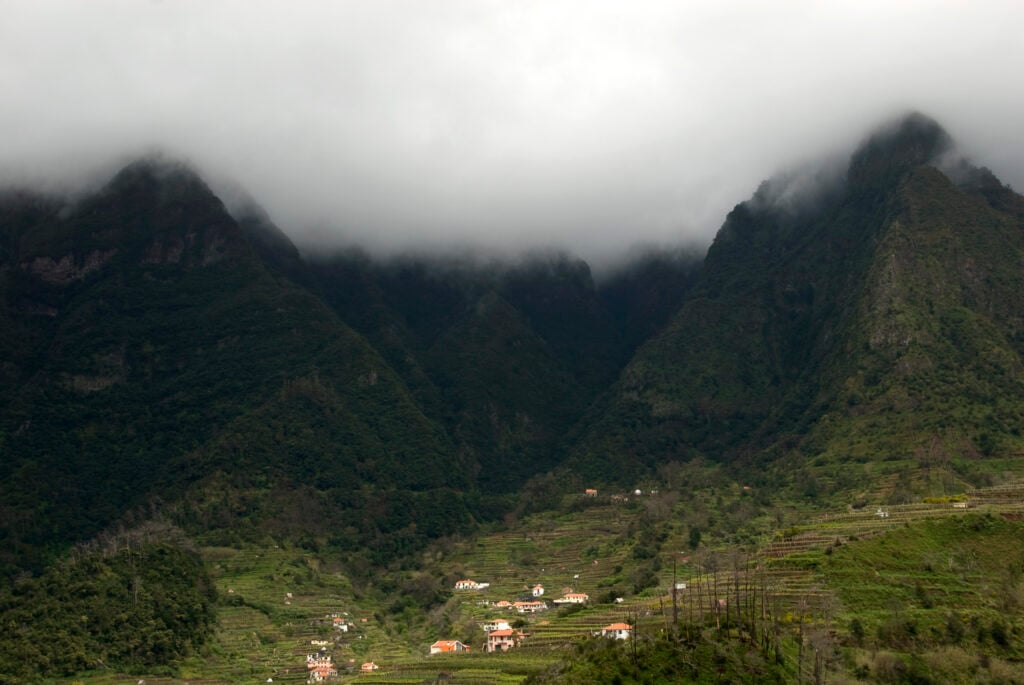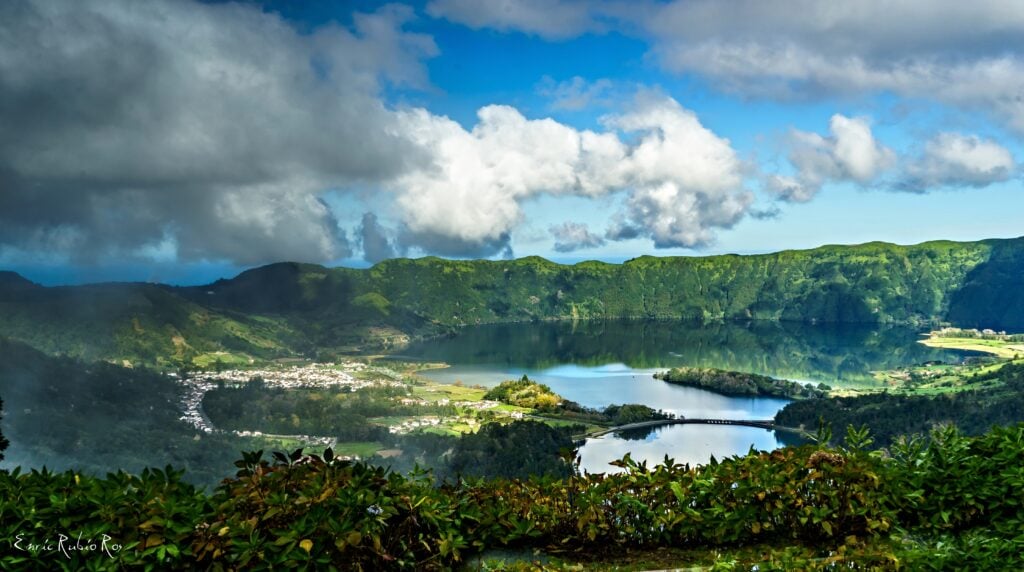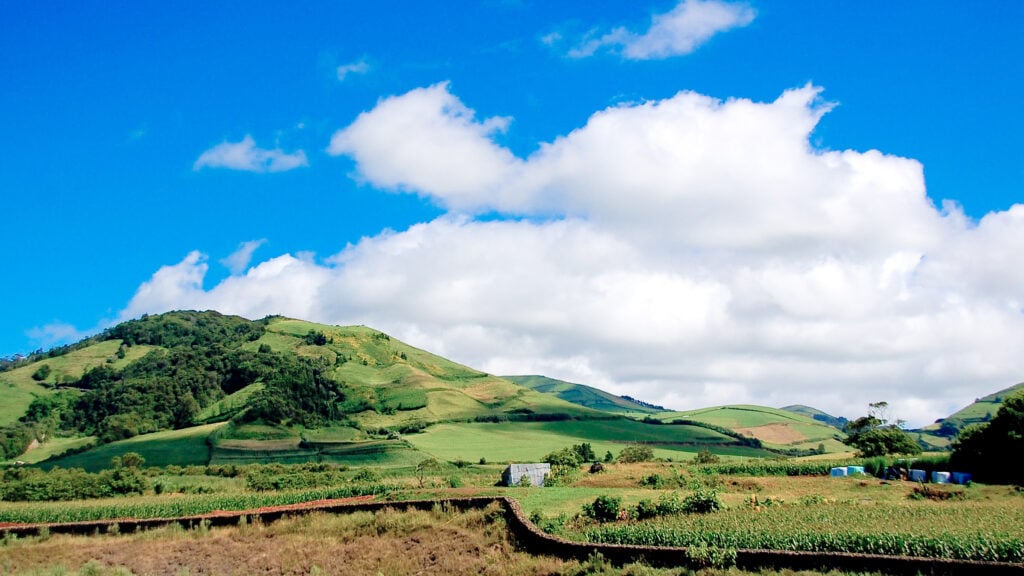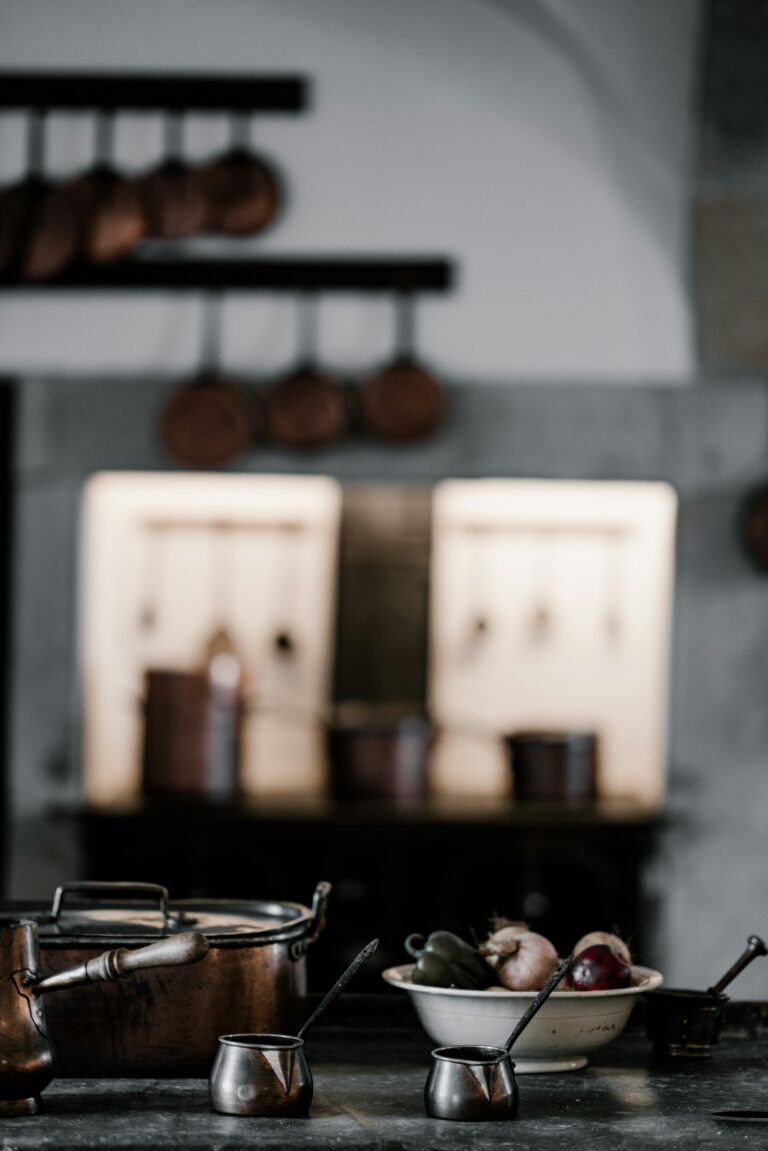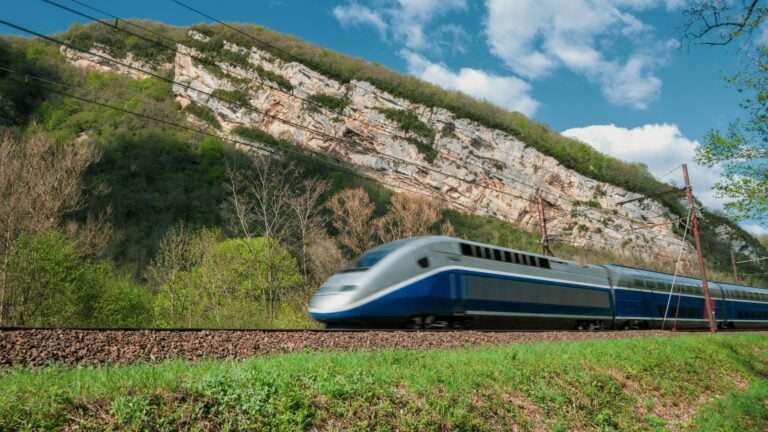Hey lovebirds, get ready to dive into the heart of Portugal, where every twist and turn reveals a new chapter in your love story. I’m about to spill the beans on the most enchanting spots across this beautiful country, guaranteeing a romantic escapade like no other.
Picture this: cobblestone streets made for hand-in-hand strolls, vineyard-covered hills setting the stage for sunset kisses, and golden beaches inviting you to create your very own seaside love story. Portugal is calling, and it’s time to answer with a resounding “Amor!”
In this guide, I’m not holding back on the good stuff. From sipping port wine amidst the terraced vineyards of Douro Valley to exploring the canal-laced charm of Aveiro, I’ve got your romance checklist covered. Imagine cozying up in the medieval charm of Óbidos, chasing winter thrills in the snowy retreats of Serra da Estrela, or trading sweet nothings amidst the seaside breezes of Sesimbra and Comporta.
Portugal is not just a destination; it’s a canvas for love, and I’m here to help you paint the most vibrant picture of your romantic getaway. So, grab your partner’s hand, and let’s uncover the love notes Portugal has hidden for you.
1. Douro Valley: Wine and Romance by the Riverside
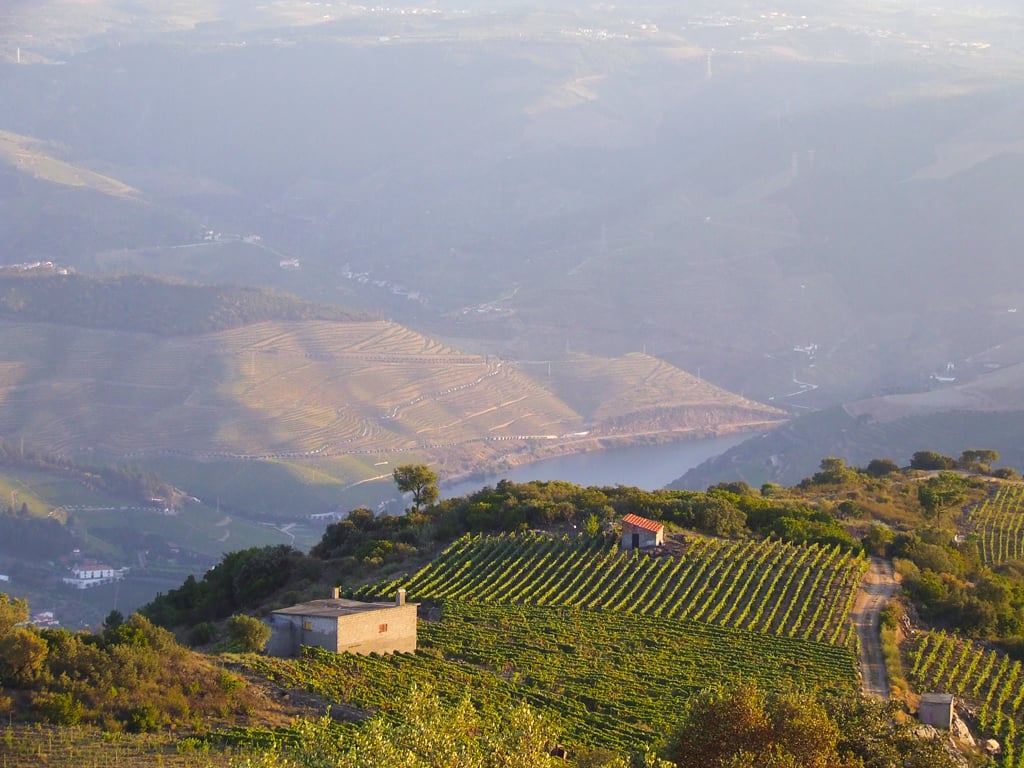
The Douro Valley, situated in the northern part of Portugal, stands out as an exceptional destination for couples seeking a romantic retreat. Renowned for its terraced vineyards, scenic landscapes, and the meandering Douro River, this region offers an idyllic setting that captures the hearts of those in search of romance.
What to Do:
- Wine Tasting: The Douro Valley is a UNESCO World Heritage site, celebrated for its wine production. Embark on a romantic journey through the valley’s numerous quintas (wine estates), where you can indulge in wine tastings and explore the winemaking process. Sipping on exquisite port wine surrounded by the stunning vineyard-covered hills is a sensory experience perfect for couples.
- River Cruises: A romantic escape along the Douro River is a must. Several operators offer leisurely cruises that allow couples to absorb the breathtaking scenery while enjoying each other’s company. Sunset cruises, in particular, provide a magical atmosphere as the sun bathes the terraced hills in warm hues.
- Picnics in the Vineyards: Pack a picnic basket with local delicacies and wines, and find a secluded spot amidst the vineyards. The intimate setting, with the river flowing in the background and terraced slopes creating a picturesque backdrop, sets the stage for a memorable romantic meal.
- Exploring Quinta Gardens: Some wine estates feature exquisite gardens that provide a serene environment for couples to wander hand in hand. Quinta do Crasto and Quinta do Vallado are examples of estates with beautiful gardens, where you can enjoy a leisurely stroll together.
- Historic Train Journey: Consider taking the historic train journey along the Douro Valley. The scenic route passes through charming villages and vineyards, offering couples a nostalgic and romantic way to experience the region.
Not-to-Miss Spots:
- Pinhão: A charming town nestled in the heart of the Douro Valley, Pinhão is known for its historic train station adorned with azulejo tiles depicting the region’s landscapes.
- Peso da Régua: Often referred to as the capital of the Douro, Peso da Régua provides a central location for exploring the valley. Don’t miss the Douro Museum, which offers insights into the region’s wine culture.
- Miradouro de São Leonardo de Galafura: This viewpoint provides one of the most breathtaking panoramic views of the Douro Valley. It’s an ideal spot for couples to appreciate the beauty of the landscape together.
2. Aveiro: The Charm of the “Portuguese Venice”
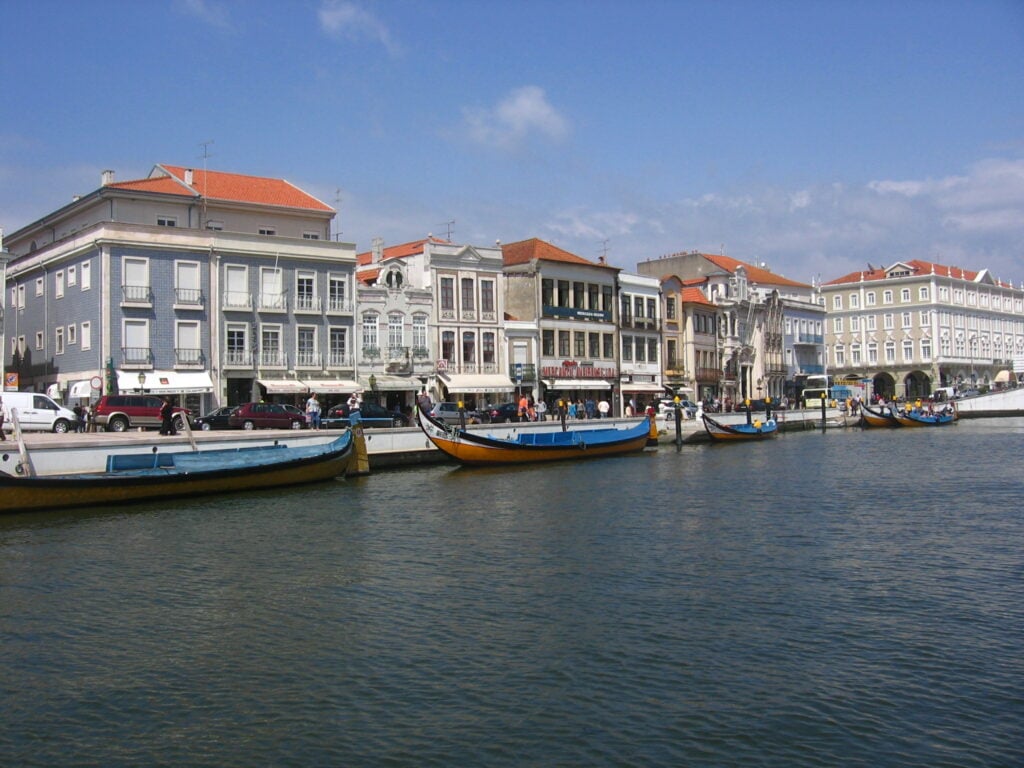
Aveiro, often referred to as the “Venice of Portugal,” stands out as a delightful and romantic destination, making it an ideal spot for couples seeking a charming retreat. Nestled along the central coast of Portugal, Aveiro is characterized by its picturesque canals, colorful moliceiro boats, and historic architecture, creating a romantic atmosphere that captivates visitors.
Romantic Activities:
- Canal Boat Ride: Embrace the enchanting ambiance of Aveiro by taking a romantic boat ride along its canals. The traditional moliceiro boats, adorned with vibrant colors and intricate designs, provide a leisurely and intimate way to explore the city’s waterways.
- Costa Nova: Just a short distance from Aveiro, Costa Nova is a coastal gem known for its striped, candy-colored houses. Stroll along the sandy beaches hand in hand, admiring the charming architecture and enjoying the sea breeze.
- Aveiro’s Historic Center: Wander through Aveiro’s historic center, characterized by its cobbled streets, lively squares, and charming buildings. The Praca do Peixe (Fish Square) is a particularly romantic spot, surrounded by restaurants and cafes with outdoor seating.
- Art Nouveau Architecture: Aveiro boasts beautiful examples of Art Nouveau architecture, adding a touch of elegance to the city. Explore buildings like the Aveiro Railway Station and the Museum of Aveiro for a cultural and romantic experience.
- Sunset at Barra Lighthouse: Head to the Barra Beach area to witness a breathtaking sunset at the iconic Barra Lighthouse. The changing colors of the sky, combined with the rhythmic sounds of the ocean, create a magical setting for couples.
Not-to-Miss Spots:
- Moliceiro Boat Tour: Ensure you take a moliceiro boat tour to fully appreciate Aveiro’s canals. The boat guides often share local stories and legends, enhancing the romantic allure of the experience.
- Aveiro Cathedral (Sé de Aveiro): Visit the Aveiro Cathedral, a beautiful Gothic and Baroque-style church that adds a historical touch to your romantic getaway. The panoramic views from the cathedral tower are worth the climb.
- Ovos Moles de Aveiro: Indulge in the local specialty, Ovos Moles, a sweet treat made with egg yolks and sugar. Many pastry shops in Aveiro offer these delicious and romantic desserts.
- Santa Joana Museum: Located in the former Convent of Santa Joana, this museum houses a rich collection of religious art and artifacts. Explore the museum’s serene atmosphere and learn about Aveiro’s history.
3. Serra da Estrela: For a Cozy Weekend
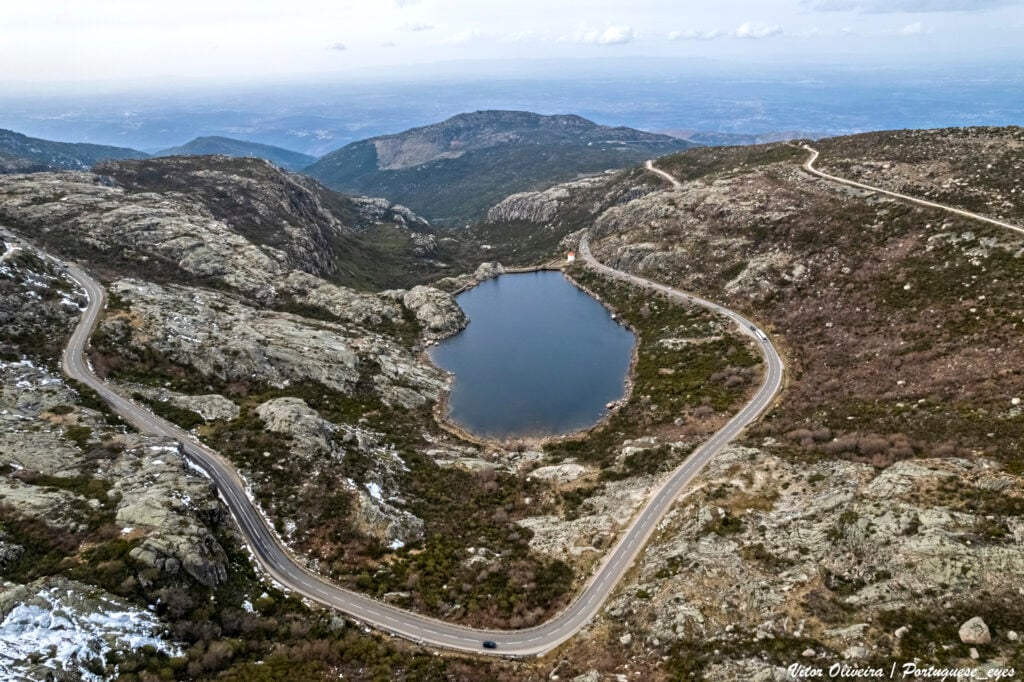
Right in the heart of Portugal, the Serra da Estrela mountain range emerges as an enchanting destination for couples seeking a romantic retreat. As the highest mountain range in the country, Serra da Estrela offers a unique blend of natural beauty, cozy mountain villages, and outdoor adventures, making it an ideal escape for those in search of romance.
Romantic Activities:
- Mountain Hiking and Stargazing: Serra da Estrela is a haven for nature lovers. Embark on a romantic hike through its scenic trails, hand in hand with your loved one. As evening falls, the clear mountain skies create a perfect canvas for stargazing. Find a secluded spot away from city lights to admire the constellations together.
- Cozy Mountain Villages: Explore the charming villages scattered across the mountains, such as Manteigas and Sabugueiro. Wander through cobblestone streets, visit local cafes, and immerse yourselves in the peaceful and romantic atmosphere of these mountain retreats.
- Serra da Estrela Cheese Tasting: Indulge in the region’s gastronomic delights, particularly the famous Serra da Estrela cheese. Share a cheese-tasting experience with your partner, savoring the flavors of this renowned Portuguese delicacy.
- Lagoa Comprida: A serene glacial lake surrounded by mountains, Lagoa Comprida offers a tranquil setting for couples to enjoy a leisurely lakeside stroll. The reflective waters and pristine nature create a romantic ambiance, perfect for quiet moments together.
- Winter Sports: If visiting during the winter months, embrace the opportunity for some cozy, romantic winter sports. Serra da Estrela is a popular destination for skiing and snowboarding, providing a thrilling yet intimate experience on the slopes.
Not-to-Miss Spots:
- Torre: As the highest point in mainland Portugal, Torre offers panoramic views of the surrounding landscapes. Climb to the top together and enjoy the breathtaking vistas.
- Covão da Ametade: This hidden valley within the mountains is a picturesque location surrounded by towering cliffs. The peaceful atmosphere makes it an ideal spot for couples to connect with nature.
- Museu do Pão (Bread Museum): Located in Seia, this unique museum celebrates the cultural significance of bread in the region. Explore the exhibits and enjoy the quaint surroundings of the museum.
- Covão dos Conchos: A natural marvel, Covão dos Conchos features a captivating funnel-like hole in the ground that serves as an overflow for the Lagoa Comprida. The hike to this spot is both adventurous and romantic.
4. Óbidos: Walking Back in Time

Óbidos, a charming medieval town with cobblestone streets and historic charm, is a perfect destination for a romantic retreat in Portugal. Nestled on a hilltop and surrounded by medieval walls, Óbidos exudes a fairy-tale atmosphere, making it an idyllic setting for couples looking to immerse themselves in history and romance.
Romantic Activities:
- Walk along the Castle Walls: Óbidos is enclosed within well-preserved castle walls, providing a romantic backdrop for leisurely strolls. Take a walk along the walls to enjoy panoramic views of the town and surrounding countryside.
- Explore the Historic Streets: Wander through Óbidos’ narrow, winding streets adorned with whitewashed houses and vibrant bougainvillea. The historic architecture and charming atmosphere create a romantic ambiance, perfect for exploring hand in hand.
- Ginja Liqueur Tasting: Ginja, a Portuguese cherry liqueur, is a local specialty in Óbidos. Many shops offer tastings of this sweet and flavorful drink, providing a delightful and romantic experience for couples.
- Praça de Santa Maria: The main square, Praça de Santa Maria, is surrounded by quaint cafes and restaurants with outdoor seating. Enjoy a romantic meal or a cup of coffee while taking in the picturesque surroundings.
- Visit Óbidos Castle: Explore the medieval Óbidos Castle, which has been converted into a historic hotel. The castle’s romantic atmosphere and panoramic views make it a must-visit spot for couples.
Not-to-Miss Spots:
- Porta da Vila: The main entrance gate to Óbidos, Porta da Vila, is a picturesque structure adorned with tiles and flowers. It serves as a charming introduction to the town and is a popular spot for photos.
- Igreja de Santa Maria: This medieval church is known for its impressive Manueline-style architecture. The interior features intricate details, creating a serene and romantic setting.
- Óbidos Bookshop: Housed in a former church, the Livraria de Santiago is a unique bookshop where couples can browse through a curated selection of books in a romantic and historic setting.
- Chocolate Festival: If visiting during the annual Chocolate Festival held in Óbidos, indulge in sweet treats and enjoy the lively atmosphere. The festival adds an extra layer of romance to the town’s already enchanting ambiance.
5. Schist Villages: For Peace and Adventure
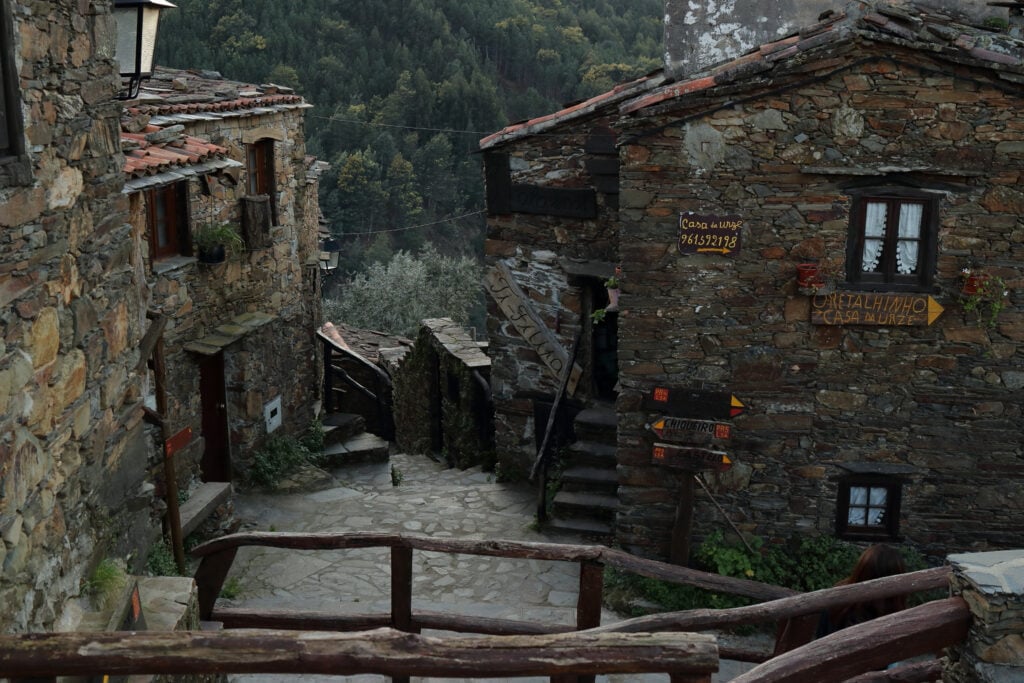
The Schist Villages in Portugal, known for their quaint charm and unique architecture, provide an intimate and off-the-beaten-path destination for couples seeking a romantic retreat. Nestled within the mountainous regions, these villages boast stone houses, cobbled streets, and a peaceful atmosphere, offering an authentic and romantic escape.
Romantic Activities:
- Scenic Hikes: The Schist Villages are surrounded by breathtaking natural landscapes, making them an ideal destination for couples who enjoy outdoor activities. Embark on scenic hikes together, exploring the picturesque surroundings and discovering hidden viewpoints.
- Cozy Accommodations: Many Schist Villages offer charming and cozy accommodations, such as renovated stone cottages or guesthouses. Stay in one of these romantic hideaways, surrounded by the rustic charm of the village and the tranquility of the mountains.
- Candlelit Dinners: Enjoy romantic dinners in local restaurants, where the ambiance is often enhanced by dim lighting and traditional décor. Indulge in authentic Portuguese cuisine while savoring the intimate atmosphere of these charming villages.
- Photographic Strolls: The narrow streets and stone architecture of the Schist Villages create a picturesque setting that’s perfect for romantic strolls. Capture special moments together as you explore the unique details and rustic beauty of these historic villages.
- Local Craft Workshops: Some Schist Villages host workshops where visitors can engage in local crafts and activities. Participate in a pottery class or learn traditional weaving techniques, creating lasting memories as a couple.
Not-to-Miss Spots:
- Piódão: One of the most well-known Schist Villages, Piódão is characterized by its slate-roofed houses that blend harmoniously with the natural surroundings. Explore the village’s narrow streets and visit the Ethnographic Museum to learn more about local traditions.
- Melo: Known as the “Authentic Village,” Melo is renowned for its well-preserved schist houses and traditional architecture. The village exudes a serene atmosphere, making it an ideal spot for couples seeking tranquility.
- Casal de São Simão: Tucked away in a green valley, Casal de São Simão is a hidden gem among the Schist Villages. Enjoy the natural swimming pools in the nearby river and relish the peaceful surroundings.
- Candal: Accessible by a scenic drive, Candal is a small and secluded village surrounded by lush forests. The peaceful ambiance and unspoiled nature make it a romantic destination for couples looking for serenity.
6. Sintra: For a Fairy Tale Weekend
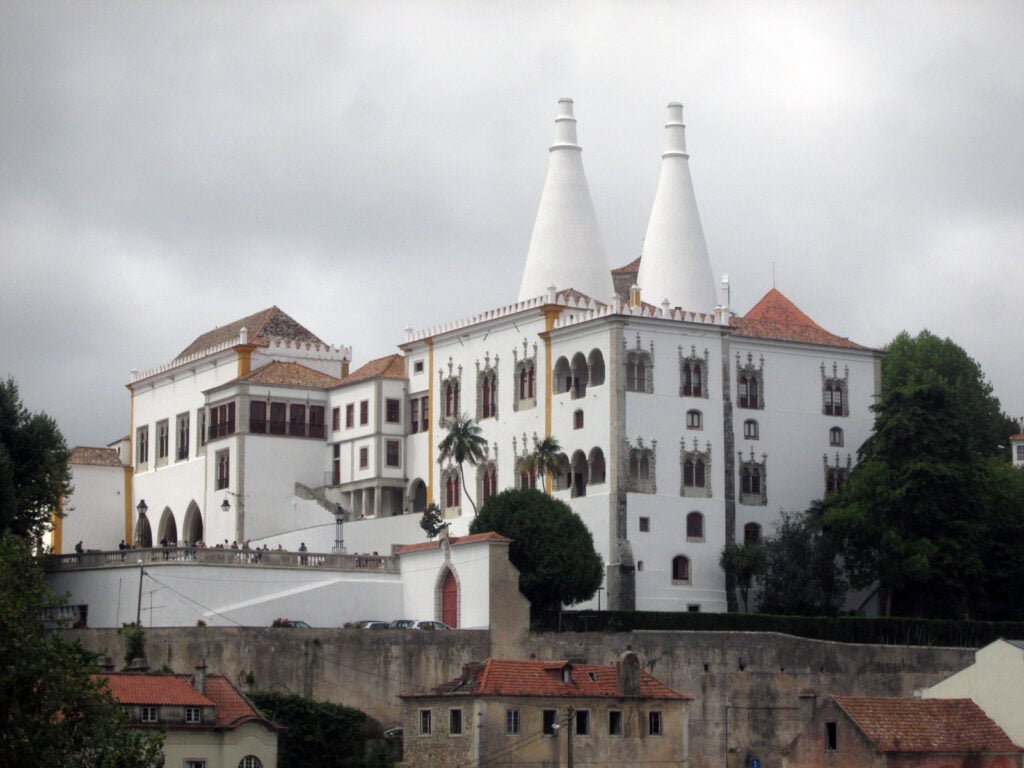
Sintra, with its fairy-tale landscapes, historic palaces, and lush gardens, stands out as an enchanting destination for couples seeking a romantic retreat. Nestled in the hills of the Lisbon region, Sintra’s captivating beauty and romantic ambiance make it a perfect escape for those looking to immerse themselves in a world of romance and fantasy.
Romantic Activities:
- Pena Palace: Explore the iconic Pena Palace, a romantic 19th-century castle perched on a hilltop. The palace’s vibrant colors and eclectic architecture create a dreamlike atmosphere, making it an ideal spot for a romantic stroll through its gardens with panoramic views.
- Quinta da Regaleira: Delve into the mysterious and romantic Quinta da Regaleira estate. Discover its romantic gardens, underground tunnels, and symbolic initiation well. This UNESCO World Heritage site provides an atmospheric setting for couples to explore hand in hand.
- Monserrate Palace: Wander through the exotic gardens of Monserrate Palace, known for its botanical diversity and romantic allure. The palace’s architectural blend of Moorish, Gothic, and Indian influences adds to the enchantment of the experience.
- Sunset at Cabo da Roca: Take a scenic drive to Cabo da Roca, the westernmost point of continental Europe, and witness a breathtaking sunset over the Atlantic Ocean. The dramatic cliffs and sea views create a romantic setting for couples to enjoy the beauty of nature together.
- Palácio de Seteais: Stay at the Palácio de Seteais, a romantic palace-turned-hotel surrounded by lush gardens. The opulent atmosphere and classic architecture provide a luxurious backdrop for a romantic getaway.
Not-to-Miss Spots:
- Sintra’s Historic Center: Stroll through the charming historic center of Sintra, where narrow streets are lined with boutique shops, cafes, and traditional Portuguese tiles. The romantic ambiance of the town is perfect for leisurely walks and exploration.
- Castle of the Moors: Hike to the Castle of the Moors, an ancient fortress with panoramic views of the surrounding landscape. The ruins offer a secluded and romantic spot for couples to enjoy each other’s company.
- Sintra National Palace: Visit the Sintra National Palace, the oldest surviving palace in Portugal. The blend of Moorish and Manueline architecture creates a unique backdrop for a cultural and romantic experience.
- Convent of the Capuchos: Explore the Convent of the Capuchos, a small and charming Franciscan monastery tucked away in the Sintra hills. The simplicity and natural surroundings make it a tranquil and romantic escape.
7. Sesimbra and Comporta: For a Seaside Retreat
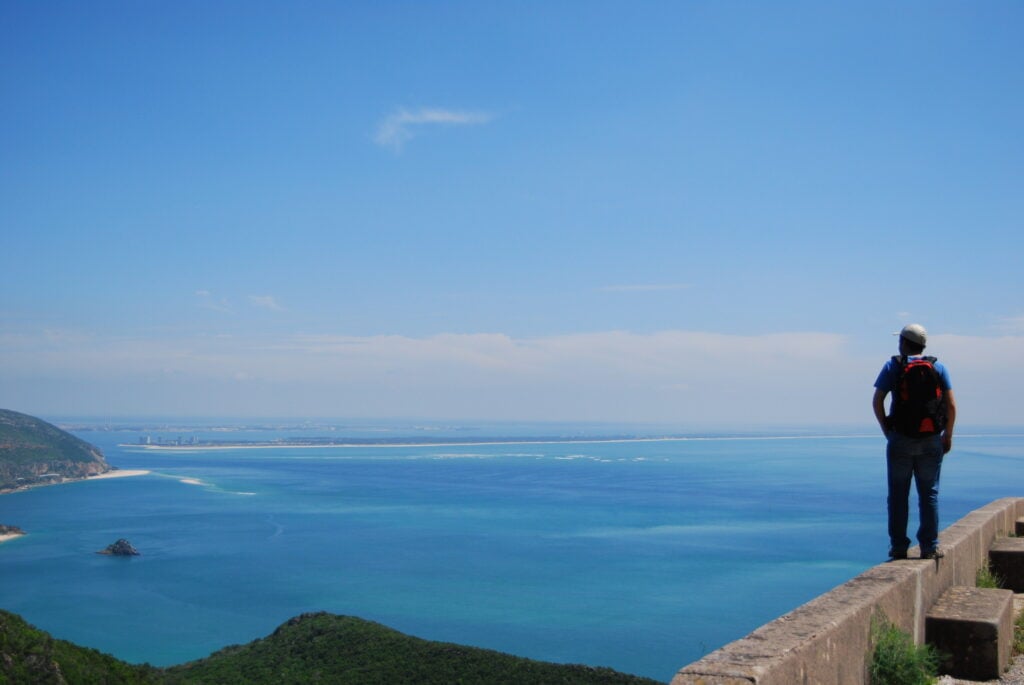
Sesimbra and Comporta, two coastal gems in Portugal, offer couples an idyllic setting for a romantic retreat. With their pristine beaches, charming villages, and natural beauty, these destinations provide the perfect backdrop for intimate moments and shared experiences.
Romantic Activities:
- Beachside Romance: Sesimbra boasts beautiful beaches with golden sands and clear blue waters. Spend romantic days lounging on the beach, taking leisurely walks along the shoreline, and enjoying the calming sound of the waves.
- Sesimbra Castle: Perched on a hill overlooking the town and the sea, Sesimbra Castle offers panoramic views of the surrounding landscape. Couples can explore the castle grounds and share a quiet moment while taking in the breathtaking scenery.
- Fresh Seafood Dining: Sesimbra is renowned for its fresh seafood. Indulge in a romantic dinner at a seaside restaurant, where you can savor locally caught fish and seafood while enjoying the sunset over the Atlantic.
- Rice Paddies and Countryside Strolls: Comporta is surrounded by vast rice paddies and beautiful countryside. Take a romantic stroll through the fields, immersing yourselves in the serene and natural environment.
- Wine Tasting: Comporta is part of the Alentejo wine region. Visit local vineyards for wine tastings, where you can sample regional wines and enjoy the romantic setting of vine-covered landscapes.
- Arrábida Natural Park: Explore the nearby Arrábida Natural Park, a haven of natural beauty. Hike or drive through the park together, discovering secluded beaches, limestone cliffs, and lush greenery that create a romantic and peaceful atmosphere.
Not-to-Miss Spots:
- Troia Peninsula: Take a short ferry ride from Sesimbra to the Troia Peninsula. The secluded beaches and ancient ruins of Troia offer a romantic escape with a touch of history.
- Cabo Espichel: Head to Cabo Espichel for stunning views of the Atlantic Ocean. The cliffs, lighthouse, and sanctuary create a picturesque backdrop for a romantic outing.
- Comporta Beach Club: Relax at the Comporta Beach Club, a stylish beachfront venue with a relaxed atmosphere. Enjoy cocktails, ocean views, and each other’s company in this chic setting.
- Sado River Dolphin Watching: Embark on a romantic boat tour along the Sado River from Sesimbra. Dolphin-watching in the pristine waters adds a touch of magic to your coastal retreat.
8. The Inner Alentejo: Cheese, Wine, and Solitude
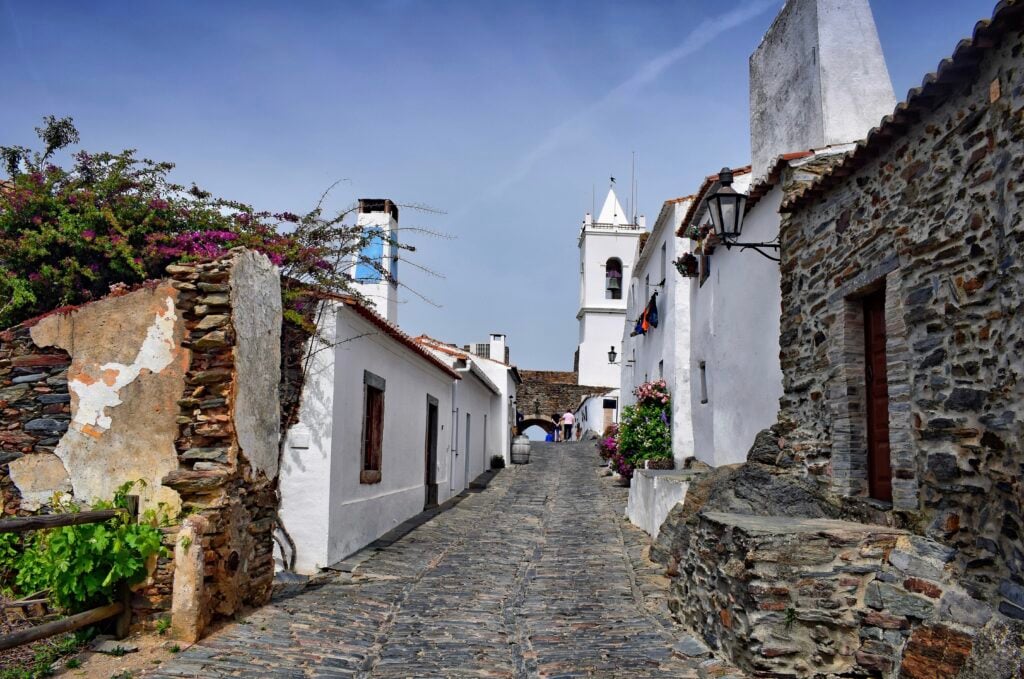
The Inner Alentejo region, featuring historic towns like Évora, Marvão, and Monsaraz, offers couples a tranquil and romantic escape into the heart of Portugal’s cultural and natural richness. With its charming cobblestone streets, medieval castles, and rolling landscapes, the Inner Alentejo provides an intimate setting for couples seeking a romantic retreat.
Romantic Activities:
- Historic City Center: Évora’s well-preserved medieval center is perfect for romantic strolls. Wander through the narrow streets, visit the Giraldo Square, and explore historic sites like the Roman Temple and the Cathedral.
- Chapel of Bones (Capela dos Ossos): Share a unique and somewhat eerie experience at the Chapel of Bones, a small chapel adorned with human bones. The macabre setting creates a thought-provoking atmosphere for couples.
- Dining in Historic Settings: Enjoy romantic meals in charming restaurants set within historic buildings. Many establishments in Évora offer a blend of traditional Alentejo cuisine and a cozy ambiance.
- Évora Wine Tour: Take a leisurely wine tour around the surrounding vineyards. The Alentejo region is known for its excellent wines, and couples can enjoy tastings at local wineries.
- Medieval Castle: Marvão is renowned for its well-preserved medieval castle perched on a hilltop. Explore the castle together, taking in panoramic views of the surrounding plains and distant mountains.
- Cobblestone Streets: The quaint streets of Marvão are lined with charming houses adorned with colorful flowers. Stroll through the town hand in hand, discovering hidden corners and enjoying the romantic atmosphere.
- Medieval Charm: Monsaraz, another medieval jewel, exudes a romantic charm with its narrow streets, whitewashed houses, and medieval castle. Explore the town and visit the main square for a relaxed and intimate experience.
- Alqueva Dark Sky Reserve: Monsaraz is part of the Alqueva Dark Sky Reserve, making it an excellent destination for couples interested in astronomy. Join a stargazing tour and witness the magic of the night sky.
- Sunset at the Castle: Share a romantic moment watching the sunset from the Monsaraz Castle. The changing colors of the sky over the vast Alentejo plains create a mesmerizing and intimate setting.
Not-to-Miss Spots:
- Alqueva Dam: Visit the Alqueva Dam, the largest artificial lake in Europe. The serene waters and surrounding landscapes provide a peaceful backdrop for couples looking to unwind.
- Évora’s University: Explore the University of Évora, known for its historical significance and beautiful architecture. The university’s gardens and courtyards offer a tranquil setting for a romantic stroll.
- Monsaraz Wine Cellars: Sample local wines in the wine cellars of Monsaraz. Enjoy a private tasting experience with your loved one and savor the flavors of Alentejo wines.
9. Alentejo’s Southwest: For Seaside Wilderness
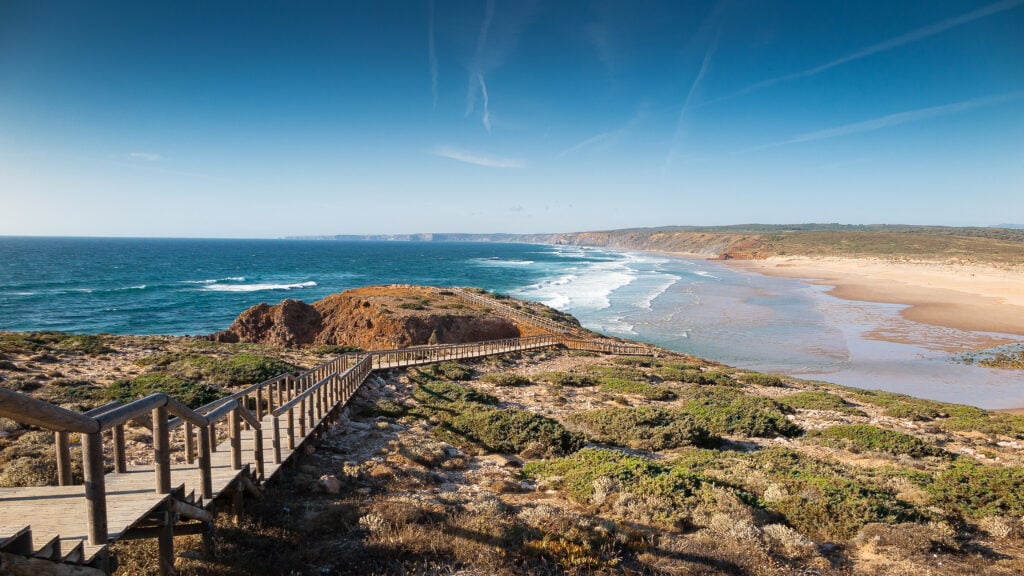
Alentejo’s Southwest, characterized by its rugged coastline, pristine beaches, and charming villages, offers a serene and romantic setting for couples seeking a peaceful retreat in Portugal. From golden cliffs to quaint coastal towns, this region provides a perfect blend of natural beauty, cultural experiences, and intimate moments.
Romantic Activities:
- Pristine Beaches: Alentejo’s Southwest is home to some of Portugal’s most secluded and beautiful beaches. Enjoy a romantic day at Praia da Zambujeira do Mar or Praia do Carvalhal, where golden sands meet the Atlantic waves, creating a serene and intimate atmosphere.
- Cliffside Walks: Take romantic walks along the dramatic cliffs overlooking the ocean. The Rota Vicentina coastal trail offers breathtaking views, providing couples with the opportunity to connect while surrounded by the natural beauty of the coastline.
- Sunset at Cabo Sardão: Witness a mesmerizing sunset at Cabo Sardão, known for its picturesque lighthouse and stunning coastal views. The changing colors of the sky over the rugged cliffs make for a truly romantic experience.
- Porto Covo: Explore the charming village of Porto Covo, known for its white-washed houses and welcoming atmosphere. Stroll through the cobblestone streets, visit the historic church, and enjoy a romantic meal at a seaside restaurant.
Not-to-Miss Spots:
- São Torpes Beach: Known for its therapeutic warm waters, São Torpes Beach is an ideal spot for couples looking to relax and enjoy each other’s company. The calm sea and golden sands create a tranquil setting for a romantic day by the water.
- Vila Nova de Milfontes: Nestled at the mouth of the Mira River, Vila Nova de Milfontes combines river and ocean landscapes. Enjoy a boat ride along the river or explore the beaches, immersing yourselves in the peaceful surroundings of this coastal town.
- Rota Vicentina: Hike a portion of the Rota Vicentina, a network of walking trails that traverse the region. The Fishermen’s Trail, in particular, offers stunning coastal views and secluded spots for couples to enjoy some quiet time together.
- Odeceixe: Visit Odeceixe, a charming village perched on a hill with views of the river and ocean. The village’s relaxed atmosphere and scenic surroundings create a romantic ambiance, perfect for a leisurely day out.
10. São Miguel Island, Azores: For a Once-in-a-Lifetime Experience
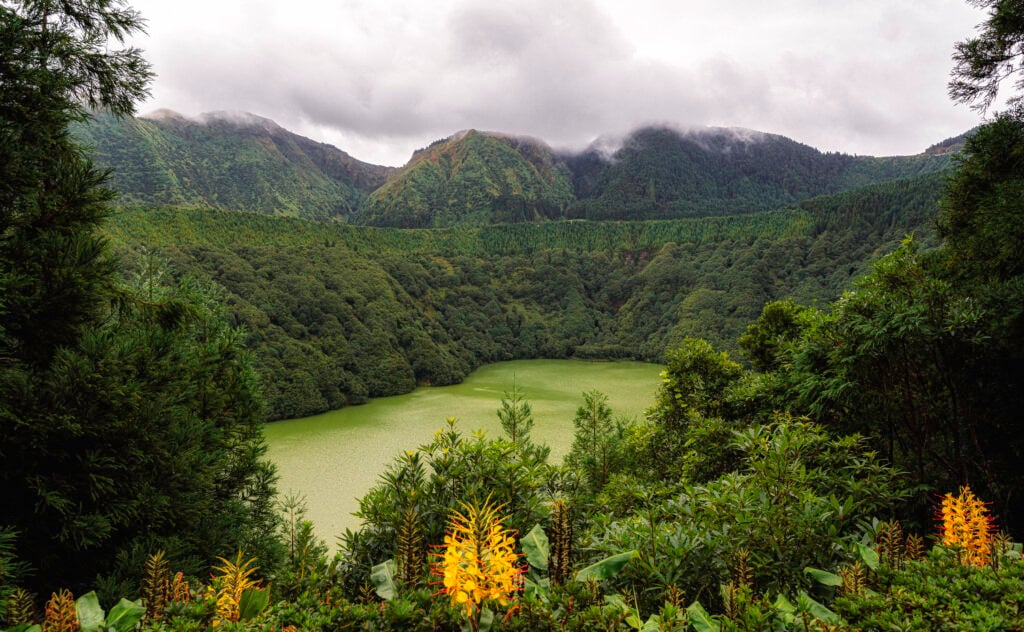
São Miguel Island, right in the middle of the Atlantic Ocean in the Azores archipelago, stands out as a uniquely romantic destination, offering couples a harmonious blend of natural beauty, tranquility, and adventure. Known for its lush landscapes, volcanic craters, and vibrant greenery, São Miguel is a perfect haven for couples seeking a romantic retreat.
Romantic Activities:
- Sete Cidades: The twin lakes of Sete Cidades, one blue and one green, form an iconic and romantic landscape. Enjoy a scenic drive around the crater rim or hike to the Vista do Rei viewpoint for breathtaking panoramic views, especially during sunset.
- Thermal Springs: São Miguel is home to natural thermal springs, such as the Poça da Dona Beija in Furnas. Share a relaxing soak in the warm mineral-rich waters, surrounded by lush vegetation and the soothing sounds of nature.
- Lagoa do Fogo: This pristine crater lake, surrounded by untouched landscapes, is an ideal spot for couples seeking a secluded and romantic setting. Hike to the viewpoints or simply enjoy the serenity of the lake together.
- Tea Plantations: São Miguel boasts Europe’s only tea plantations in Gorreana and Porto Formoso. Take a romantic stroll through the tea fields, learn about the tea production process, and enjoy a quiet moment in the picturesque surroundings.
- Whale Watching: Experience the thrill of whale watching in the Atlantic. São Miguel offers various excursions where you and your partner can witness these majestic creatures in their natural habitat, creating unforgettable memories together.
Not-to-Miss Spots:
- Furnas: Explore the town of Furnas, known for its geothermal activity and beautiful botanical gardens. Don’t miss the Terra Nostra Park, where you can walk hand in hand through lush gardens and relax in thermal pools.
- Nordeste: This charming northeastern part of the island is characterized by rolling hills, scenic viewpoints, and picturesque landscapes. Enjoy a peaceful drive through Nordeste, discovering hidden spots and taking in the island’s beauty.
- Ponta Delgada: The island’s capital, Ponta Delgada, offers a mix of historic charm and modern amenities. Stroll along the waterfront, visit historical sites like the Portas da Cidade, and enjoy romantic meals at seaside restaurants.
- Lagoa das Sete Cidades: Besides the iconic twin lakes, the area around Lagoa das Sete Cidades offers walking trails and viewpoints. Take a leisurely hike with your partner, exploring the lush surroundings and capturing the beauty of the landscape.
Over and Out
As we bid adieu to this whirlwind tour of Portugal’s most romantic havens, I hope you’re armed with inspiration for your next love-filled adventure. Whether you’re clinking glasses in the terraced vineyards of Douro Valley, strolling hand in hand along Aveiro’s canals, or losing yourselves in the medieval magic of Óbidos, each destination offers a unique backdrop to create lasting memories.
From the cozy retreats of Serra da Estrela to the seaside allure of Sesimbra and Comporta, the historic richness of Inner Alentejo, the wild coastline of Alentejo’s Southwest, to the lush landscapes of São Miguel Island – Portugal has whispered sweet promises of love in every corner. It’s a country where romance is not just a gesture; it’s a way of life.
So, whether you’re planning your honeymoon, a surprise getaway, or just a weekend escape with your special someone, Portugal has set the stage for your love story. The only question left is: Which romantic adventure will you choose? Embrace the allure, savor every moment, and let the magic of Portugal weave its spell on your hearts. Obrigado for joining me on this journey, and may your love story continue to unfold in the most enchanting way possible!



